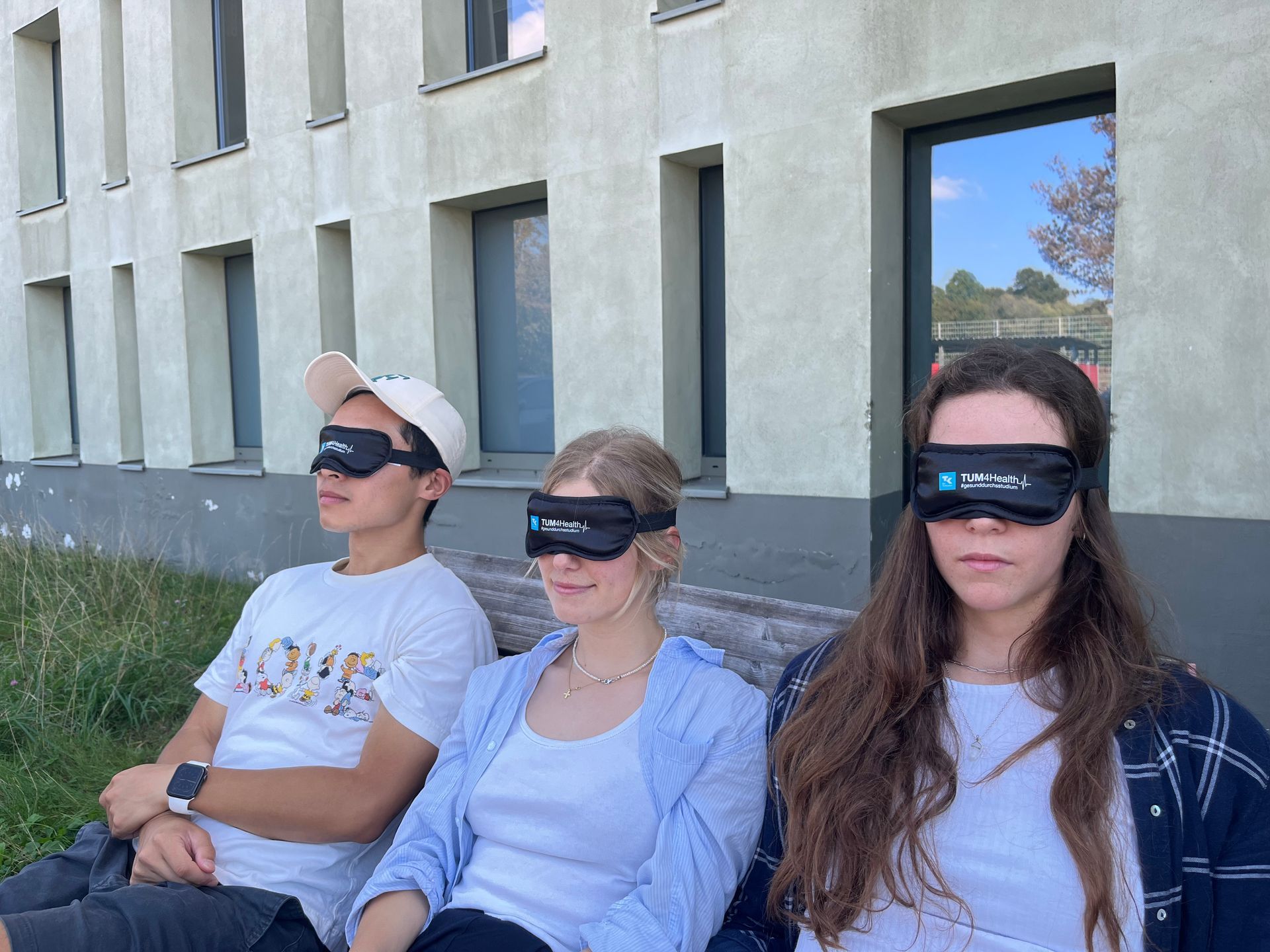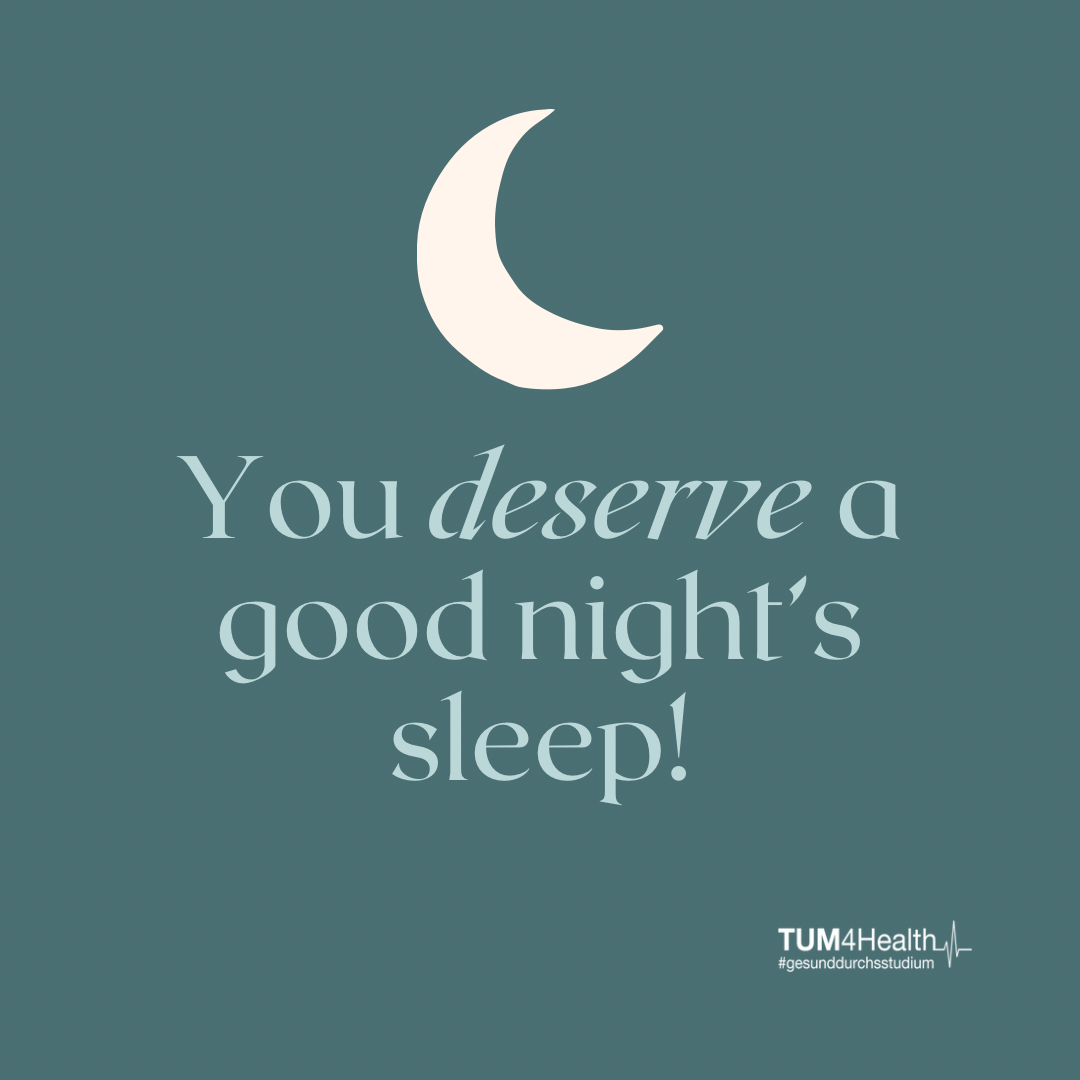How to improve your Sleep
On this page you will learn all about sleep and its importance to our body and mind, how to develop a healthy sleep and ways to incorporate a sleep routine into your everyday student life!
This is a sub-project of the student health management which is lead by the professorship for sports and health didactics at TUM. Find more information HERE.
News
The Dreamteam is a working group of students from various TUM Schools, collaborating to develop an online sleep education course tailored to the specific needs of TUM students. Each team member brings their unique ideas and expertise to drive this initiative forward. In celebration of the German Society for Sleep Research and Sleep Medicine (DGSM)'s Day of Sleep on June 21, 2024, BR-Abendschau highlighted the importance of healthy sleep and offered insights into the Dreamteam's work.
Why is sleep important?
Our sleep is crucial to the human organism and essential for maintaining physical and mental health. We spend almost a third of our lives sleeping. Although the amount of sleep needed varies from person to person, it is scientifically proven that sleep is not a "luxury" but a necessity for optimal functioning. In short: it doesn't work without sleep!

Sleep Hygiene
Would you like to improve your sleeping habits or your morning routine, but don't know how?
Sleep Disorders
When do you start talking about a sleep disorder? What are the symptoms?
Myths uncovered!
Uncover common sleep myths and learn about the science behind it!
What happens while you sleep?
During bedtime, our body is not idle. On the contrary, during sleep our body carries out important and complex processes on different levels. Immediately before going to bed, our body temperature reaches its peak and thus supports the process of falling asleep. After that body temperature decreases again. Shortly after falling asleep, heartbeat and blood pressure drop which helps the body to relax. This process also initiates numerous processes: growth hormones are released, which support the regeneration of bones, muscles and organs. Due to the presence of natural defense cells and antibodies, our immune system is strengthened during sleep. The metabolism is also running at full speed, especially in the first half of the night: energy stores are replenished, new proteins are formed and metabolic waste products are removed from the brain. Sleep is also needed for the regeneration of the neural system and to consolidate memory content. Sleep deprivation can already lead to a variety of short term impairments: reduced ability to concentrate and react, as well as the ability to solve problems.
Learn about the different sleep phases
As sleep researchers have shown, the body goes through a total of four different sleep phases in a specific, repetitive sequence every night. The sleep phases are basically divided into two stages, non-REM sleep (phases 1-3), which accounts for about 80% of sleep, and REM sleep. rapid eye movement; Phase 4), also called paradoxical sleep. All four phases together make up the sleep cycle, which in a healthy person lasts between 80 and 100 minutes. Depending on how long we sleep, each of us goes through a different number of these cycles in one night, with a healthy sleep cycle between four and five.

How much sleep do we need?
Sleep duration is the total duration of sleep, either during the night's sleep episode (night time sleep duration) or over a 24-hour period. Optimal sleep duration can vary from person to person due to genetic factors and other reasons, so general recommendations need to be adjusted individually. For healthy adults, the Sleep Research Society (SRS) between 7 and 9 hours of sleep per night is recommended.
| Age range | Recommended sleep duration | |
|---|---|---|
| Baby | < 1 year | 14-17 hours |
| Toddler | 1-2 years | 11-14 hours |
| Kindergarten child | 2-4 years | 10-13 hours |
| School child | 5-12 years | 9-11 hours |
| Teenager | 13-17 years | 8-10 hours |
| Young adults | 18-25 years | 7-9 hours |
| Adults and Seniors | > 25 years | 7-9 hours |
Sleeping less than 7 hours a night increases the risk of suffering from chronic diseases such as cardiovascular diseases, depression, diabetes , and obesity. In addition, the immune system is weakened and there may be a loss of performance [1].
Sleep in university students
Our need for sleep changes over different phases of life. In phases of growth, such as childhood, more sleep is needed than in others. However, when entering the university we are in a transitional phase, which is also associated with a changed lifestyle and increasing autonomy in personal life. The social environment is changing, as many are moving out of their homes and moving into shared or single apartments for their studies. The strongly varying starting times of the lectures and new life circumstances can lead to changed sleeping habits which can increase sleep problems.
While it may be tempting to sleep less or pull an all nighter, it's not worth it as sleep is essential to staying mentally and physically fit. Start by making sleep a priority and actively planning time for it. the Adjusting your sleep hygiene , which also includes the sleeping environment and other behaviors, can support you on the way to a healthy sleep pattern.









